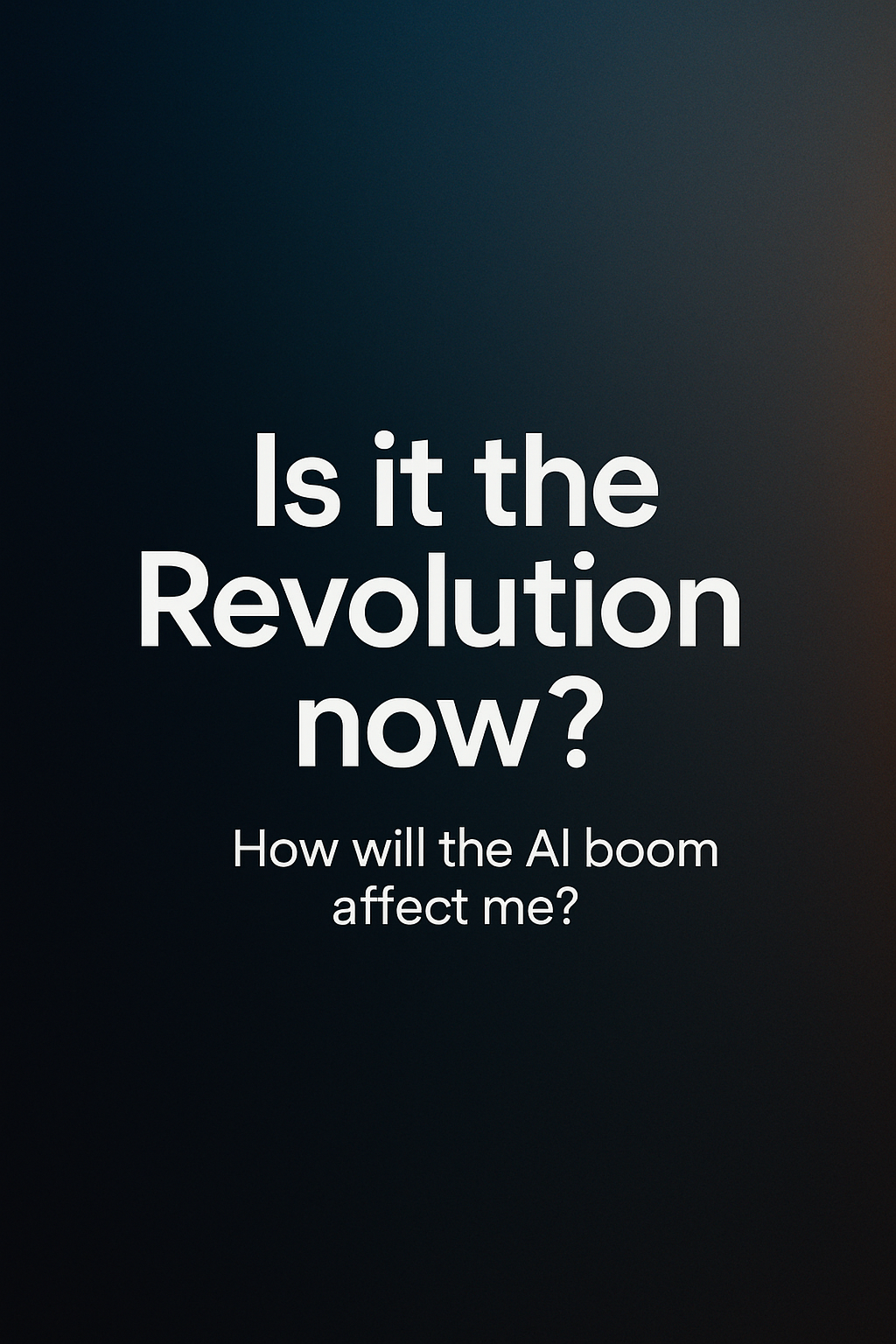One thing we know for sure about a revolution: it impacts our lives.
We live in an era so saturated with stimuli that not only does tomorrow become uncertain, but even the memories of yesterday fade. In this information-overloaded world, it’s almost impossible to scare a human with the idea of a revolution—because revolutions come and go.
Still, I attempt to peer into the future. I am convinced that we are standing at the dawn of a transformative era.
When developing artificial intelligence (AI), the entity that learns and adapts is called an “agent.” The space where this learning occurs is the “environment.” In this space, the agent observes, makes decisions, evaluates, and then recalibrates. It repeats this cyclical process, refining its decisions over time. This is how it learns which decisions lead to success in different situations.
This is especially evident in reinforcement learning (RL) models, where an agent may appear to stagnate for hundreds of cycles—“spinning its wheels”—before a sudden insight causes it to restructure everything it has learned so far. This insight represents a qualitative leap. I call these moments revolutions: when existing patterns lose their validity, and we must reinterpret what we previously believed to be correct and effective.
Let’s look at human history through this lens—as the evolutionary story of the Human agent. What revolutionary milestones emerge?
Tool-making phase
The agent extends its own strength and abilities with simple tools.
Key points: Oldowan stone tools (~2.6 million years ago), controlled use of fire (Homo erectus, ~1 million years ago).
Language phase
Agents solve complex tasks cooperatively using language.
Key points: Cognitive revolution (ca. 70,000 BCE), Chauvet Cave paintings (ca. 30,000 BCE), first pictogram-based writing (Uruk, ca. 3400 BCE).
Environment-shaping phase
The agent no longer just adapts, but reshapes its environment.
Key points: Agricultural revolution (ca. 10,000 BCE), Göbekli Tepe (ca. 9600 BCE), irrigation farming in Mesopotamia (ca. 6000 BCE).
Knowledge-sharing phase
Through recording and spreading knowledge, information can flow across generations and regions.
Key points: Cuneiform (ca. 3200 BCE), invention of paper (Cai Lun, 105 CE), printing press (Gutenberg, 1450 CE).
Industrial-mechanical phase
The agent uses machines to generate and convert energy into mechanical work.
Key points: Newcomen steam engine (1712), Watt steam engine (1769), first electric power plant (Edison, 1882).
Information-digital phase
Information is stored, processed, and transmitted digitally, with minimal delay. This radically accelerates learning cycles.
Key points: Transistor (1947), Intel 4004 (1971), ARPANET (1969), World Wide Web (1991), smartphone era (2007).
Summary – Paths to Agent Efficiency
- Extending own abilities using tools.
- Leveraging the power of other beings through information sharing, cooperation, or coercion.
- Applying mechanical power through machines.
From this perspective, artificial intelligence is the next logical step in the evolution of the Human agent—enhancing mental capabilities—and as such, it is undeniably revolutionary.
Two Phases of the AI Impact
Phase One: Extending our mental capacities
While earlier revolutions focused on enhancing physical capabilities, the AI era aims to expand intellectual performance. The pace of technological development—new machines, languages, systems—exceeds human adaptability. Thus, we increasingly need “thinking” machines.
Everyday examples:
- Generating drafts of articles, blogs, presentations
- Translation, summarization, stylistic and spelling checks
- Explaining complex concepts (e.g., in math or history)
- Code generation, algorithm descriptions, debugging
- Writing emails, reports, and meeting summaries automatically
In this phase, control remains in human hands—the AI is merely a tool that extends our cognitive abilities.
Phase Two: Delegating decision-making
In the next phase, we gradually hand over decision-making to AI. This isn’t unfamiliar—we’ve long entrusted life-impacting decisions to professionals: doctors, pilots, teachers, politicians.
The effects and risks of this stage will be analyzed in a separate article.
How does this affect our daily lives?
- AI will first impact roles heavily involving data: financial analysis, contracts, legal documents, reports.
- Lexical knowledge will fade in importance, replaced by comprehension, recognizing connections, and generating new ideas.
- New essential skills will be:
- Creative thinking, flexibility, adaptability
- Openness to continuous learning and development
- Precise, structured instruction of AI systems
Example:
“Find the invoices received last week—including those via email and scanned copies. Compare them by invoice number and highlight any matches….”
- AI systems can make mistakes—we must check their results. This will become a routine part of daily work.
- They also provide great assistance in overcoming language barriers: real-time translation, better understanding during meetings, interpreting documents—enabling people who previously couldn’t participate due to language limitations.
- Preparatory and assistant roles will transform significantly, as routine office tasks become automatable: email, forms, invoice handling, basic customer service replies.
Conclusion
The emergence of artificial intelligence marks the beginning of a new, pivotal era in human development. AI enables us to extend our cognitive abilities, making it inevitable to rethink what we consider “valuable,” “useful,” or “meaningful.” In my view, this is the true revolution.
REFERENCES:
32 LLM Use Cases in 2025: Ultimate Guide | Generative AI Collaboration Platform (Orq.ai)
AI For Business – 30 Case Studies That Led To Competitive Advantage (CXO Transform)
AI and the Future of Work: Insights from the World Economic Forum’s Future of Jobs Report 2025 – Sand Technologies
Best Practices for Implementing AI Workflow Automation in Enterprises (Cygnis)
ETHICAL ASPECTS OF USING AI IN BUSINESS | INTERNATIONAL SCIENTIFIC-ELECTRONIC JOURNAL “PIONEERING STUDIES AND THEORIES” (PST Journal)
How AI is transforming strategy development – McKinsey & Company
Organizational Structures in the Age of AI-Fueled Productivity – Reso
The Impact of Artificial Intelligence on Business Operations – International Journal of Advanced Multidisciplinary Research and Studies (multiresearchjournal.com)
Use AI to Boost Operational Efficiency in your Business | TTMS
In writing this article, I used ChatGPT, Gemini, and NotebookLM AI systems to review the industrial revolutions and analyze their impacts, as well as to identify key milestones in human development and discover common patterns among them.
